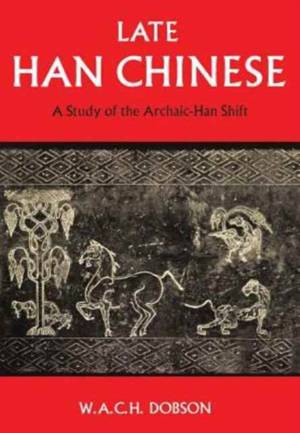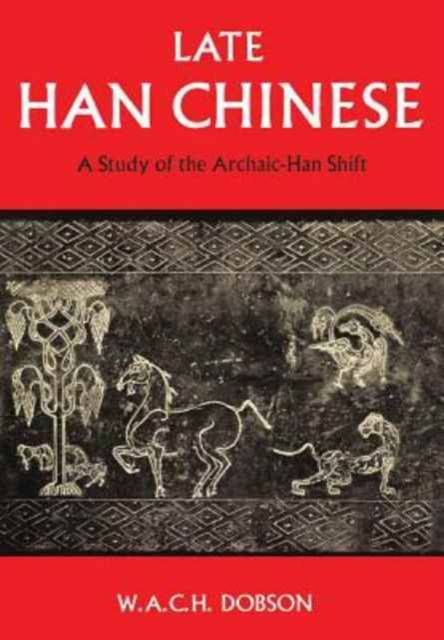
- Retrait gratuit dans votre magasin Club
- 7.000.000 titres dans notre catalogue
- Payer en toute sécurité
- Toujours un magasin près de chez vous
- Retrait gratuit dans votre magasin Club
- 7.000.0000 titres dans notre catalogue
- Payer en toute sécurité
- Toujours un magasin près de chez vous
Description
This book continues and carries a stage further Professor Dobson's pioneering researches into the nature and development of Classical Chinese. He has here compared a Late Archaic text with a paraphrase of that text written in Late Han Chinese. From that comparison he describes in systematic detail the changes that occur in Classical Chinese in the intervening five hundred years. These changes, unlike the changes that take place between Early and Middle and Middle and Late Archaic Chinese, which are formal only, show a fundamental shift. The "empty words" of Classical Chinese which, in Archaic Chinese, are crucial as grammatical indicators, in Late Han become, as later philogists have traditionally described them, "full words." Many Archaic particles become obsolete in Late Han. The "full words" in Late Han, by contrast, perform a more predictable grammatical function. Periphrastic forms replace "participles" for negation, mood, voice, and the like. "Full words" tend towards compounding and to greater restriction in syntactical deployment. This change Professor Dobson characterizes as "the Archaic-Han Shift." The Archaic-Han Shift anticipates features of the Chinese language which are familiar in Modern Standard Chinese.
This book contains, in addition, appendices describing the notions of Late Han scholars about language, the differences between "classical" and "literary" Chinese in the Late Han period, and features of Late Han which anticipate grammatical features of Modern Standard Chinese.
Late Han Chinese, together with the author's earlier works, Late Archaic Chinese and Early Archaic Chinese, constitutes a significant chapter of research in the history and development of the Chinese language. Each contains a lexicon of grammatical particles for its respective period. Late Han Chinese will take its place, together with its predecessors, as a standard reference work for all future students of the Chinese language.
Spécifications
Parties prenantes
- Auteur(s) :
- Editeur:
Contenu
- Nombre de pages :
- 162
- Langue:
- Anglais
- Collection :
Caractéristiques
- EAN:
- 9781442631175
- Date de parution :
- 15-12-64
- Format:
- Livre broché
- Format numérique:
- Trade paperback (VS)
- Dimensions :
- 170 mm x 244 mm
- Poids :
- 272 g

Les avis
Nous publions uniquement les avis qui respectent les conditions requises. Consultez nos conditions pour les avis.






